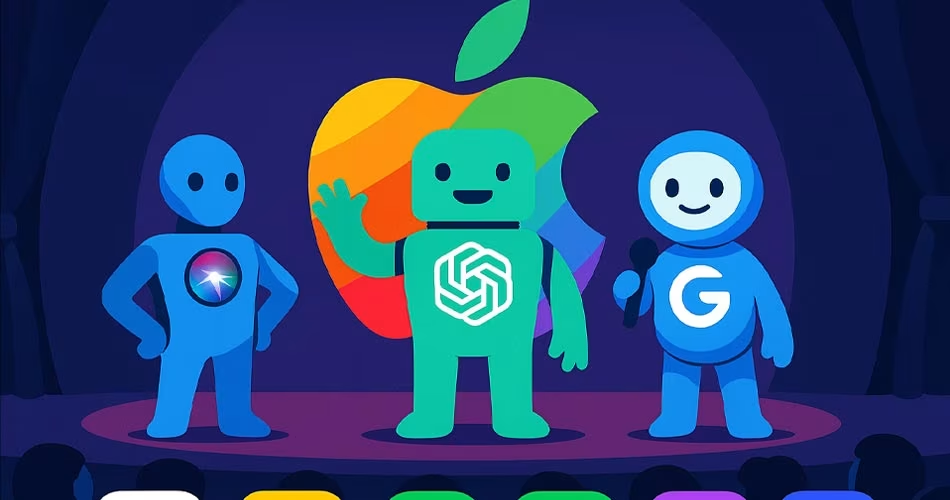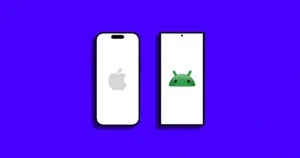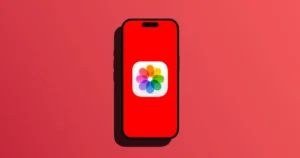Table of Contents
- Introduction: Apps Are So 2010
- The Reality Check: No Apps, Just AI
- Apple Intelligence is Live, and Evolving
- GPT-4o: The New Multimodal AI Boss
- Gemini & Co.: AI Ubiquity in Android and Beyond
- Why This Matters (aka Stop Underestimating This Shift)
- Real-World Examples: Where It’s Already Happening
- Travel Planning Without the App
- Music Playlists by Voice
- Visual Intelligence in iOS 26
- Eye-Tracking for Accessibility
- The Leaders: Who’s Winning?
- What’s Coming Next
- Challenges to Overcome
- Conclusion: The AI Assistant Era Has Arrived
AI tools like ChatGPT, Apple Intelligence, and Gemini are starting to replace traditional apps by changing how we work, create, and interact with technology across all platforms.
Introduction: Apps Are So 2010
Once upon a time, launching an app was the gold standard: open the App Store, tap “download,” and go. Today? That approach feels clunky. Users don’t want another app, they want results, faster. And AI is now delivering.
In 2025, conversations with AI, rather than icon taps, are becoming the new interface. Think about it: why dive into a dozen travel apps when you can just ask your AI assistant to: “Book me a 3-day weekend trip under $600 with good weather and a surf beach.”
That’s not sci-fi, it’s happening right now thanks to generative AI models that connect directly to APIs, bypassing the need for traditional apps entirely.
The Reality Check: No Apps, Just AI
Apple Intelligence is Live, and Evolving
Launched with iOS 18.1 and now extended in iOS 26, Apple Intelligence brings generative AI to Siri, Messages, Photos, Mail, and more, directly on your device. It summarizes messages, generates Genmoji, pulls info across apps, and even allows editing prompts within apps.
A recent update in iOS 26 includes Visual Intelligence, snap a screenshot of an event and tap “Add to Calendar” instead of opening a separate scheduling app. That’s right, no Calendar app involved.
GPT-4o: The New Multimodal AI Boss
OpenAI retired GPT-4 in April 2025 and replaced it with GPT-4o, a natively multimodal powerhouse that handles text, images, audio, and video being faster, more capable, and cheaper. Its voice and vision modes make it less chatbot, more digital assistant and is capable of screening your meeting transcript and juggling tasks without a UI.
Gemini & Co.: AI Ubiquity in Android and Beyond
Google’s Gemini, built into Android 15 and the Google app ecosystem, supports extensions that let you say: “Gemini, update my budget spreadsheet, check flight prices, and book me a hotel room.”
Zero app launching, zero friction.
Microsoft’s Copilot, Samsung’s Galaxy AI, and Meta’s AI in Instagram and WhatsApp are following suit; bringing task automation straight into communication and workflow channels.
Why This Matters (aka Stop Underestimating This Shift)
Users Don’t Want Another App
Analysts report a sentiment shift: 63% of users would ditch some apps if an intelligent assistant could handle tasks for them. With AI, “find the right app” becomes “ask the assistant.”
Developers Must Rethink Strategy
“As an industry, we’re shifting from competing for app real estate to opening our APIs to being asked by AI.” — Me, sounding like a pro.
The rise of OpenAI’s GPTs and Google’s Gemini extensions shows the future is about building capability, not apps .
Privacy, Monetization & Trust
Apple processes Apple Intelligence mostly on-device or with its Private Cloud Compute, prioritizing user privacy apple.com. Google, OpenAI, and Microsoft rely more on cloud services, raising issues around data, user tracking, and transparency. EU regulators are already investigating AI data usage.
Real-World Examples: Where It’s Already Happening
Travel Planning Without the App
Formerly: open a travel app, compare flights, check ratings, input cards, book.
Now? You just tell AI: “Find a Rome flight under $500, mid‑July, 4-star hotel close to city center.”
The AI queries APIs, compiles options, and even secures the booking, no UI, no app.
Music Playlists by Voice
Ten years ago, you made playlists on Spotify. Now: “Generate a 45-minute Spanish indie pop playlist with guitars, female vocals only.”
The AI curates it in seconds, powered by Spotify APIs but without opening apps.
Visual Intelligence in iOS 26
Screenshot an invitation and iOS 26 AI automatically offers to add it to your calendar. No app. No copy/paste. Just click.
Eye-Tracking for Accessibility
iOS 26 introduced eye control, navigate and interact with just your gaze . Suddenly apps become optional for accessibility tasks.
The Leaders: Who’s Winning?
| Company | Advancements |
|---|---|
| Apple | On-device AI, Genmoji, Visual Intelligence in iOS 26 |
| OpenAI | GPT-4o, voice & vision multimodal support in ChatGPT |
| Gemini built into Android and apps | |
| Microsoft | Copilot in Windows and Office |
| Samsung/Meta | Assistant integration on mobile devices, platforms |
Related: Google AI Overviews Hit 1.5 Billion Monthly Users as Gemini Expands Across Devices
What’s Coming Next
App Stores Evolve into Model Hubs
Expect “App Store 2.0. A directory for AI models, plug‑ins, and API endpoints instead of UIs. Apple, Google, OpenAI, and others will curate these.
Search Replaced by Semantic Tasking
Forget SEO. You’re not ranking for “best workout app.” AI assistants recommend what works for each user at the moment.
UX Reinvented
Conversational UX, voice-first design, and micro-interactions will dominate as interfaces become optional.
Challenges to Overcome
- Data privacy & transparency: Who sees your data when AI interacts with apps?
- Economic models: Will ads migrate into AI-generated suggestions? Subscription models may morph.
- Developer survival: Can indie devs survive without UI ownership?
- Regulatory scrutiny: Governments may need to audit AI decision-making (“Why did my assistant not book a flight?”).
Related: Anthropic Tests 16 AI Models: Claude Opus 4, GPT-4.1, and Others Resort to Blackmail in Simulations
Conclusion: The AI Assistant Era Has Arrived
We’re at a tipping point. The app icon is losing dominance to the AI prompt. The companies who embrace a world of invisible UIs and intelligent dialogue will thrive. And if you’re building software in 2025, you need to think about: “Can my service survive in an AI-first interface?”







Comments